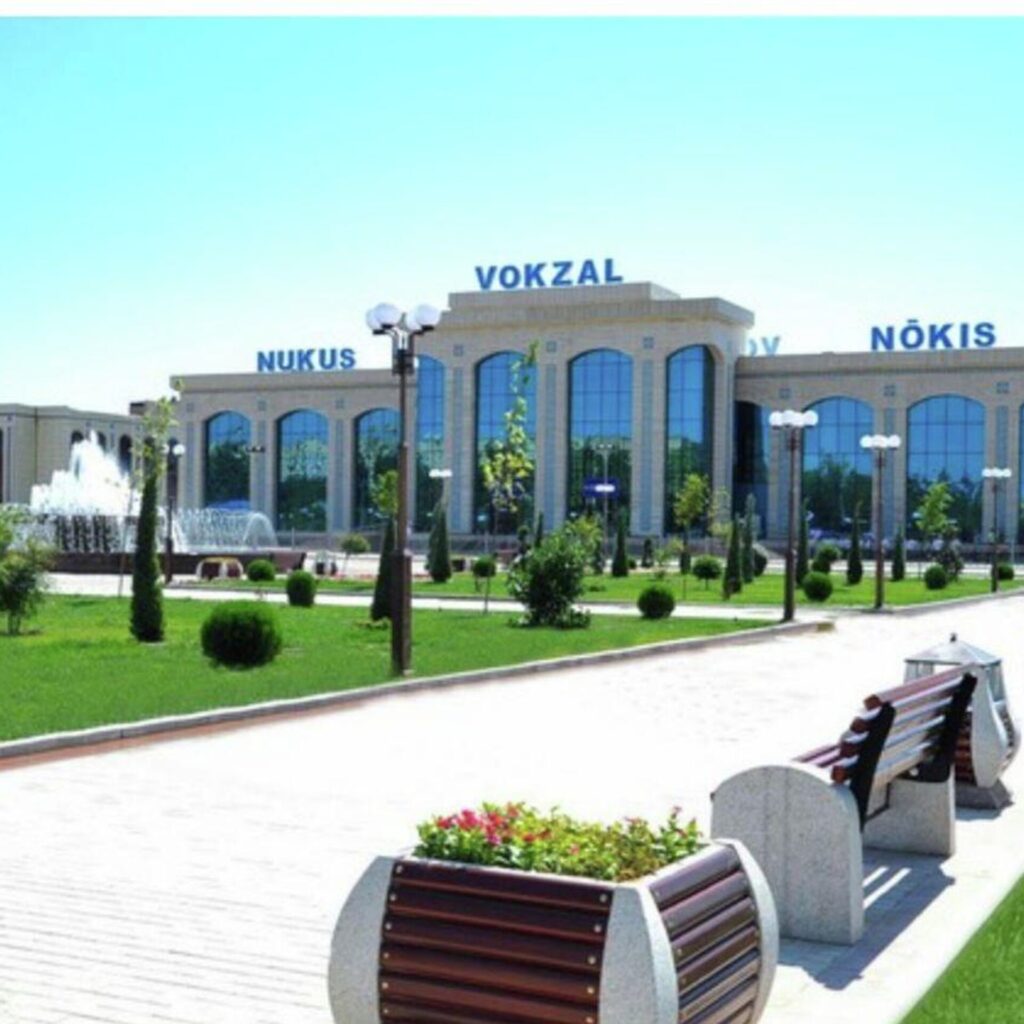About the city of Nukus
The city of Nukus was built on the site of the ancient settlement of Shurcha. According to archaeologists, the settlement originated in the IV century BC and existed until the IV century AD.
In the 60s of the XIX century, the village of Nukus appeared on this site. The first mention of Nukus as a military fortress dates back to the XII century, but those early structures have not been preserved.
The fortress was recreated anew in 1874, after the center of the Amu-Darya department Syr-Darya region The Russian Empire and the residence of the head of the Amu-Darya department The Turkestan Military District became the current one Turtkul (formerly Petroaleksandrovsk).
This fortress did not last long — in 1907 it was rebuilt (the remains have survived to the present). In the same year, 1874, a hydrometeorological station was built here, which became the first and only such station in the lower reaches of the Amu Darya.
Initially, the population of the fortress consisted of Karakalpaks, whose main occupations were agriculture and cattle breeding (men were additionally engaged in hunting). Gradually, representatives of other nations began to move to the city.
After the acquisition The Karakalpak region of the national status and the inclusion of the Amudarya region into it Turtkul became the main city of the region. However, it did not fully meet the criteria of the regional center.
In addition, the city was always in danger of being washed away by the full-flowing Amu Darya, since it was in close proximity to the river (they were only 12 km apart).
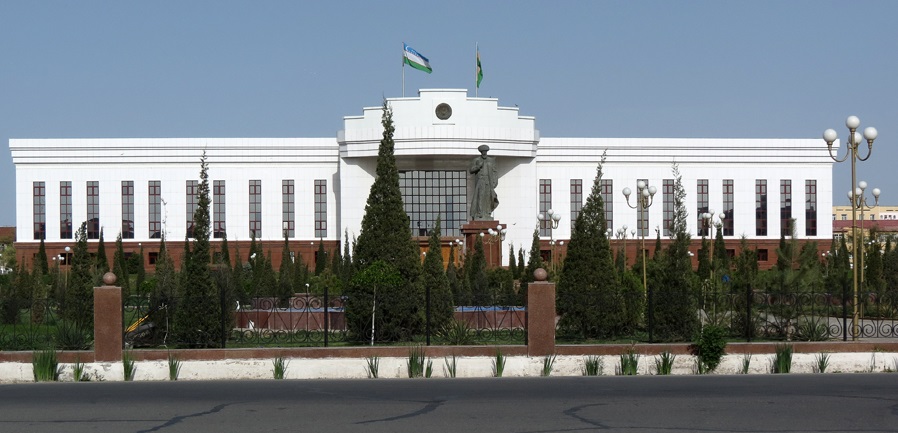
The government was faced with the question of moving the regional center to a safer place, and Nukus, one might say, was lucky — on November 2, 1930, the authorities decided to make it the capital Karakalpakstan is exactly this city.
It took a year and a half for various approvals and preparatory measures, and already from April 1, 1932, residents of Nukus could call their city the capital.
By the decree of the first President of the Republic of Uzbekistan dated September 11, 2003, the capital of Karakalpakstan was awarded the Order of Friendship.
Nukus is awarded:
For a worthy contribution to the economic and social development of our country, achieving high results in many spheres of life in difficult environmental conditions, the great work carried out by the residents of the city in strengthening friendship and harmony between all nations and nationalities living in our country, carefully preserving and enriching national values, educating the younger generation in the spirit of love and devotion to the Motherland and in connection with the 70th anniversary.
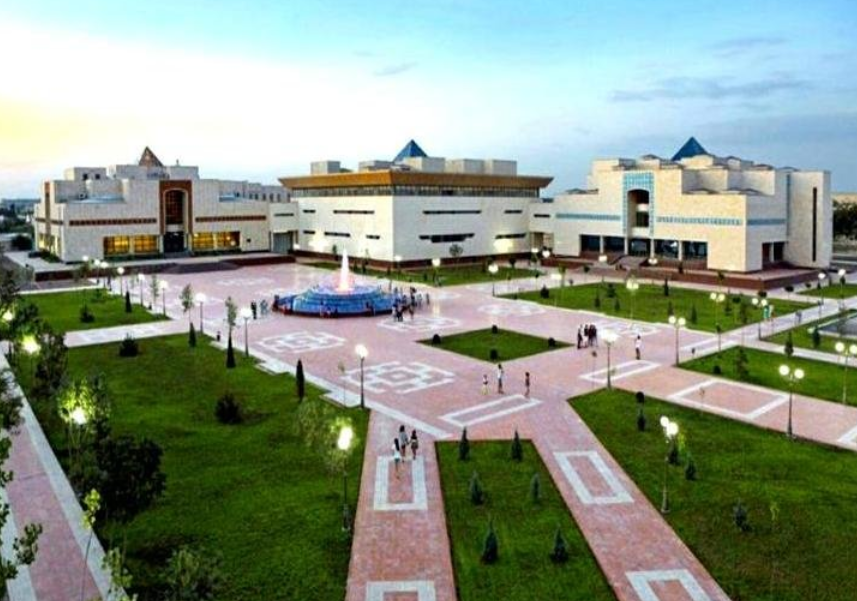
Geography
Nukus is located in the southern part of Karakalpakstan, on the right bank of the Amu Darya, 800 km northwest of Tashkent (1255 km by road).
The southern and eastern parts of the city are surrounded by desert Kyzylkum. The northern part of the city borders the Amu Darya Delta. The Kyzketken main canal (Duslyk) and the Anasai Canal (Kattagar) pass through the city.
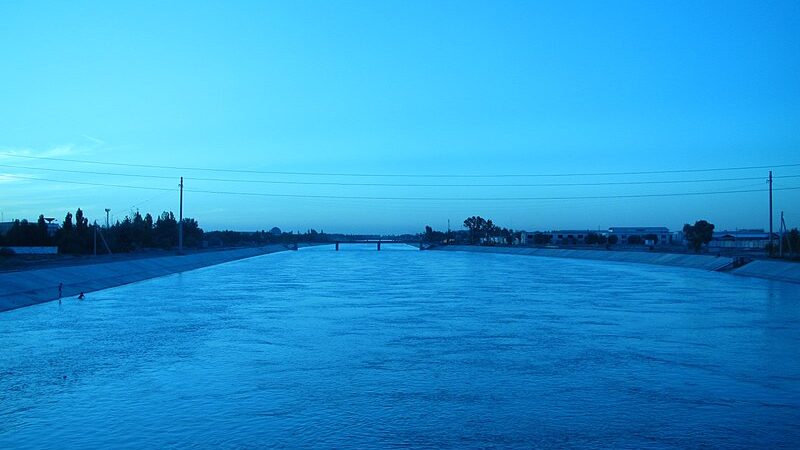
Economy
The following industrial enterprises are located in Nukus: Nukus Winery (JSC “No’kis Vinozavodi”), established in 1947; LLC “Nukus Liquorice”; LLC “Nukus Textile”; Samsung Electronics; JSC “Karakalpakkhleboprodukt”; Karakalpak branch of “Toshrangmetalzavodi”; Nukus Cannery (closed), LLC “Orient Technology”, factories Artel, concrete products, DSC (closed) in its place Nukus sity; Nukus mechanical Repair plant LLC NOKIS-REMMASH; LLC Korakalpok Tolasi; dairy mini-factories LLC Panamilk, LLC Nukus Dilisha.
Factories of polymers Nukus Polimer, electrical products Nukus Electroapparat, Nukus Shpritszavod, as well as factories for the production of building materials were built.
Attractions
The I. V. Savitsky State Museum of Art. Nukus is located in The I. V. Savitsky State Museum of Art, which is the best art collection in the Asian region, having the second largest and largest collection of works of the Russian avant-garde. The English newspaper The Guardian called the museum “one of the most beautiful museums in the world” (Amelia Gentleman “Savitsky’s secret Hoard”. The Guardian, January 1, 2001). The collection of the Nukus Museum is said to “shed light on the history of Russian art” and “gives a true picture of the artistic life of 1920-1930” (Prof. Hansen-Levet, J. K. Marcade).
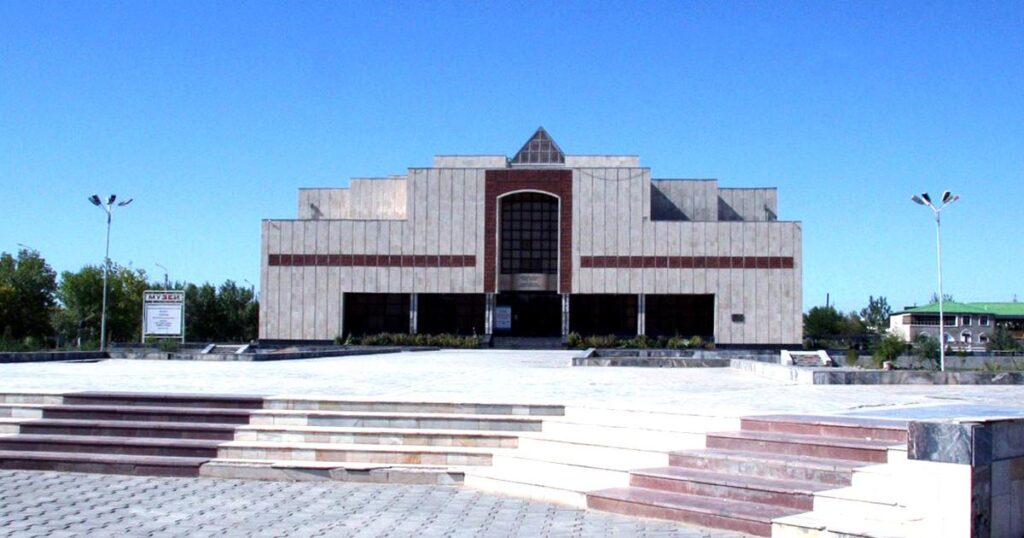
The I. V. Savitsky State Museum of Arts of the Republic of Karakalpakstan traces the cultural segment from the III century BC to the present. It presents objects of the material and artistic culture of ancient Khorezm, folk and applied art of the Karakalpaks, a small semi-nomadic ethnic group living in the north—west of Uzbekistan and having an ancient history and original culture. The department of fine arts focuses not only the national art school of Karakalpakstan, but also the works of the founders of the picturesque culture of Uzbekistan — a multinational team of artists who worked in Central Asia at the beginning of the XX century.
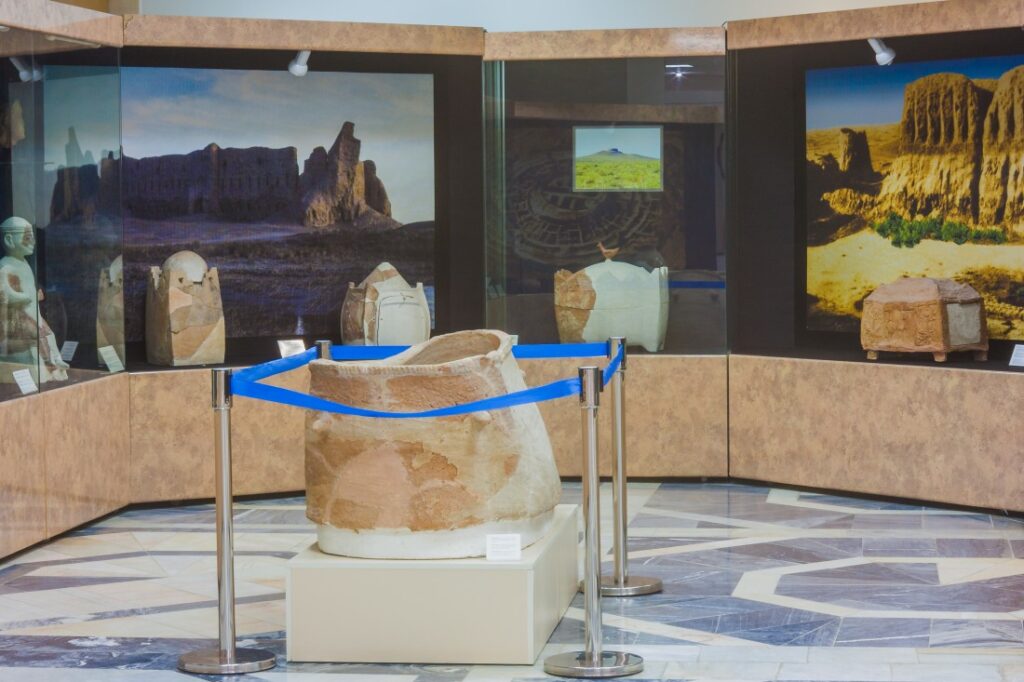
The Museum of Local Lore of Karakalpakstan
The Museum of Local Lore of Karakalpakstan in the city of Nukus is one of the oldest museums in Central Asia. The history of the museum dates back about 80 years, and its exhibitions are truly unique and interesting.
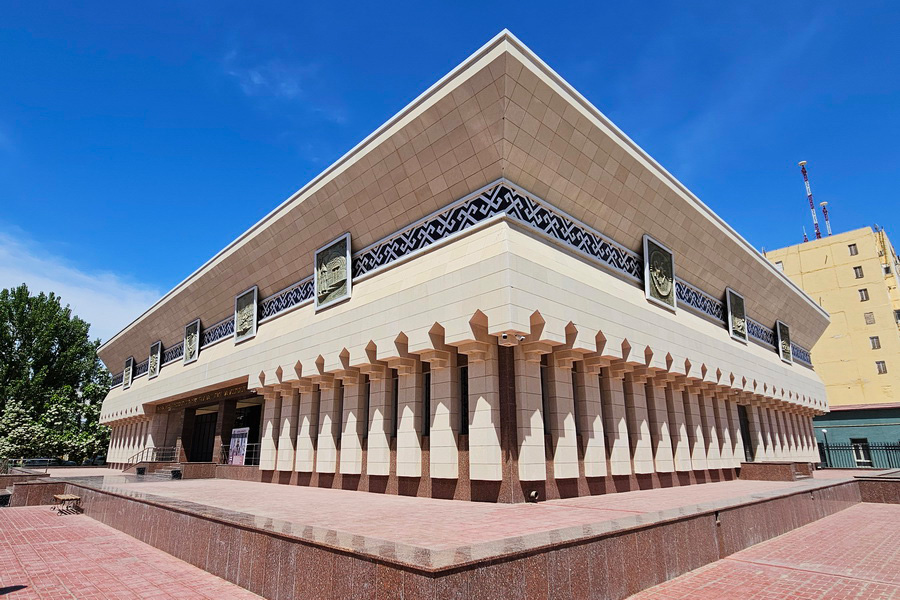
To date, the museum has more than 56 thousand exhibits, among which there are really valuable and rare ones, for example, the stuffed last Turanian tiger, now extinct. The exhibits are constantly replenished thanks to archaeological excavations, as well as cooperation with various universities and academies. In total, the museum has 21 halls, all of them are divided into themes: nature, archeology, ethnography and modern history of the region. Nature halls are very interesting, which are especially popular with children and give an idea of the flora and fauna of the republic. The Department of Archaeology contains models of ancient settlements and objects found at excavations. An interesting exposition of folk craftsmen, with embroideries, woven carpets, jewelry and musical instruments. The traditional dwelling of the local population, the Karakalpak yurt, is also represented here.
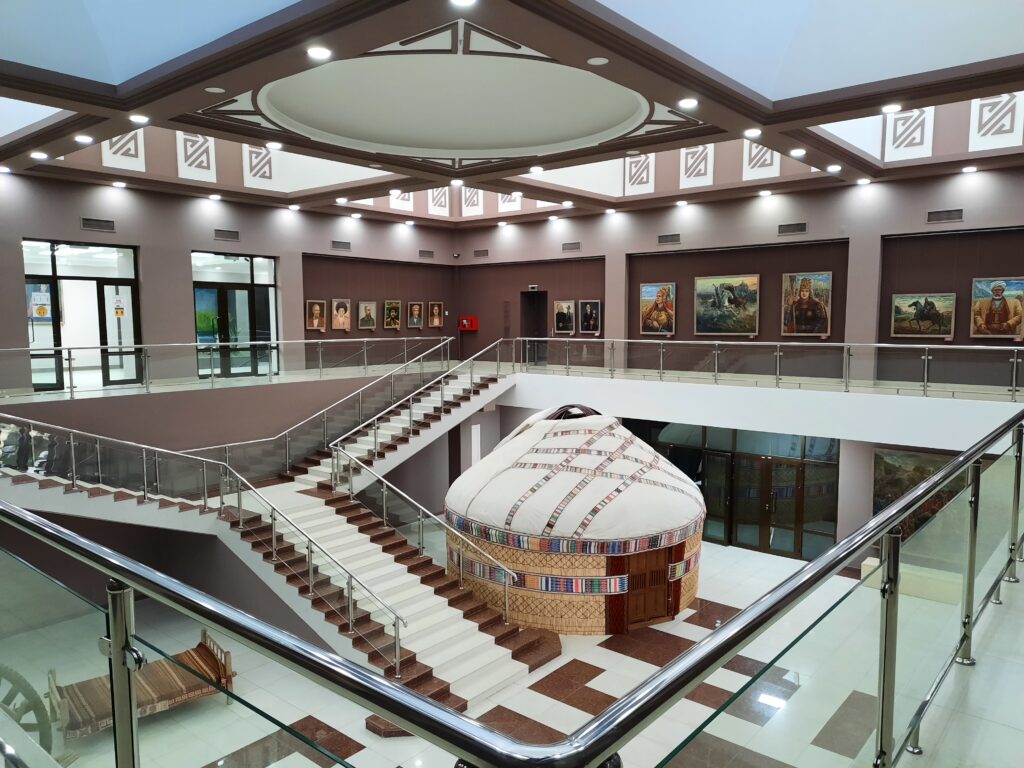
Karakalpak State Museum named after Berdakh
In 1997, in connection with the 170th anniversary of the great Karakalpak poet-thinker Berdakh, it was decided to create a museum named after him. The museum building was built in 1998 next to the Karakalpak State University.
The total area of the museum is 1.26 thousand m2. It is a three-storey building with one large and six small domes. The author is a well-known architect in the republic, winner of the Berdakh State Prize Orynbai Toreniyazov.
The museum is a treasure trove of the cultural heritage of the people, a mirror of history, which reflects the entire historical path traversed by the people from ancient times to the present day. The Berdakh Museum, justifying its vocation, decorates the city with its original architecture.
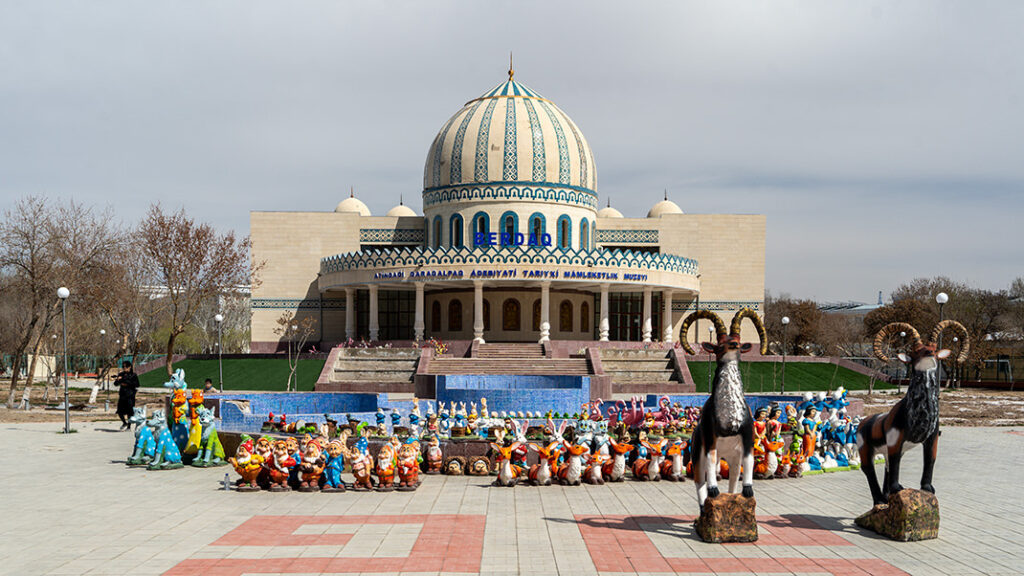
Studying the poet’s work, Berdakh can be called the first historian of the Karakalpak people. His work “Shezhire” (“Genealogy”) is truly a genealogy of an entire people (not only the Karakalpaks), as it contains information about the Turkic peoples as a whole. The poem contains the names of about 300 characters, historical figures who have made a significant contribution to the history of the people. Berdakh has poems dedicated to national heroes, such as “Amangeldi”, “Ernazar Biy” and others; the images of these heroes are still preserved in the national memory.
In addition to his poetic gift, Berdakh also possessed the talent of bakhsa (a kind of musical art). He was famous for this not only among the Karakalpaks, but also among neighboring peoples: Uzbeks and Turkmens.
Taking into account the breadth of the poet’s interests and the versatility of his work, the museum has expositions reflecting the history, ethnography and culture of the Karakalpaks. Of particular interest is the hall of ancient manuscripts, where written monuments in Arabic, Persian and Turkic languages are preserved to this day. It is also planned to organize special thematic halls of archeology, art and history.
It is planned that in the future the museum will become a center for the restoration, conservation and study of written monuments in Karakalpakstan and thereby assume a scientific and educational function.
The expositions also provide knowledge about the history of education and upbringing in Karakalpakstan, about spiritual educational institutions of the past and present (madrassas and mektebahs), about the first Soviet educational institutions, about the history of the formation of higher and secondary education in Karakalpakstan.
The Karakalpak State Musical Theatre named after Berdakh (formerly named after Stanislavsky) is located in Nukus.
There are monuments to Berdakh in the city, Ulugbek, Ajiniyaz and others.
There are archaeological sites in the vicinity of the city: Shylpyk — the Zoroastrian dakhma — and the necropolis of ancient Mizdakhkan.
Mizdakhkan
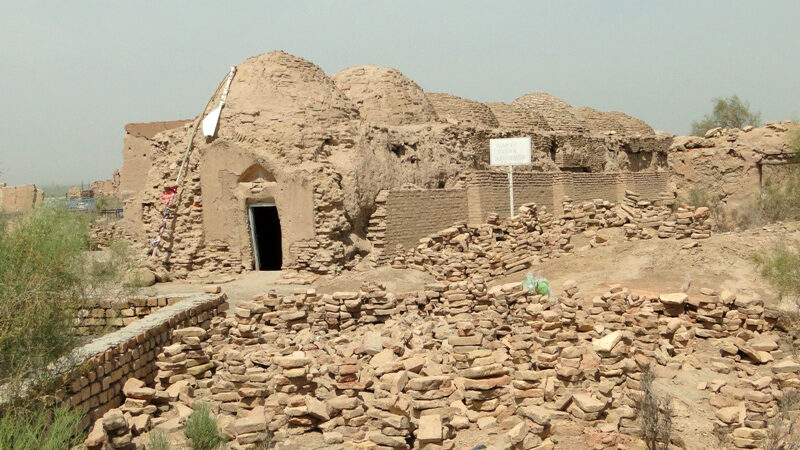
Shylpyk
The ring-shaped structure of Shylpyk is located on the highway 43 km from Nukus in the direction to the south (to Khiva, Samarkand, Tashkent), on top of a conical hill with a height of 35-40 m.
In plan, it has the shape of an open, slightly flattened circle with a diameter of 65-79 m. The walls reach a height of 15 m.
Shylpyk was erected in the II—IV centuries as a Zoroastrian dakhma. In the IX—XI centuries, it was used by local residents of the district as a signal tower.
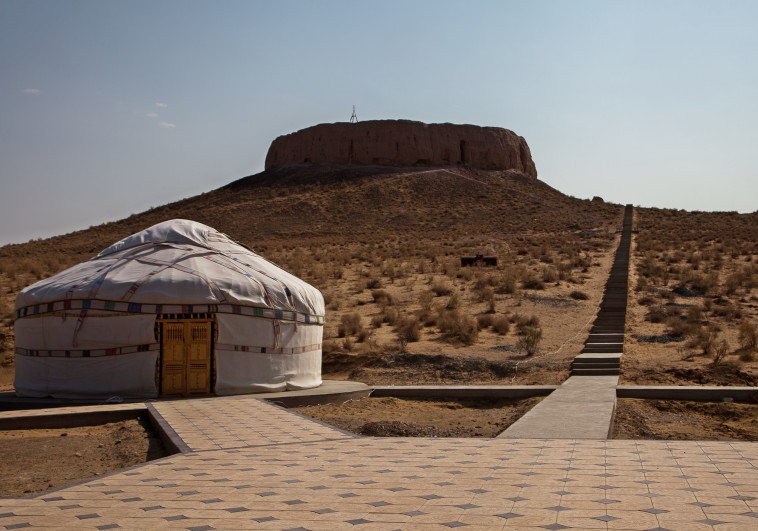
Tok-kala (Darsan)
The settlement of Tok-kala (Darsan) is located 14 km west of Nukus, on a small natural hill of Toktau. The total area is 8 hectares. The monument consists of three parts — antique, early medieval and burial ground.
The most recent study was conducted in 1998. during the educational field archaeological practice of the Department of History of the NGPI named after Azhiniyaza. The topography of the settlement was studied, and an 18 m2 room was excavated in the early medieval part. A human burial was opened, and bones were found inside a small ceramic molded vessel of the humcha type. It was covered with a brick, possibly removed from the ancient wall of the settlement.
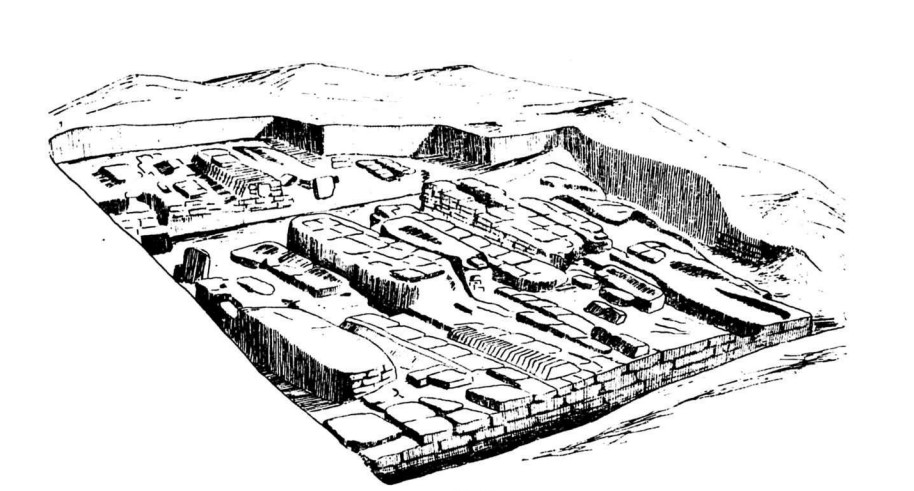
Science and education, medicine, culture and sports
The city is home to the Karakalpak branch of the Academy of Sciences of the Republic of Uzbekistan, several research institutes (including the Institute of History, Archeology and Ethnography, a branch of the Uzbek Scientific Research Institute of Pedagogical Sciences named after T. N. Kara-Niyazova (UzNIIPN), Karakalpak State University, Nukus State Pedagogical Institute named after Azhiniyaz, Medical Institute of Karakalpakstan,Institute of Agriculture and Agrotechnologies of Karakalpakstan, Nukus branch of Tashkent University of Information Technologies named after Al-Khorezmi, Nukus branch of the Institute of Sports and Culture of the Republic of Uzbekistan, Nukus Mining Institute at Navoi State Mining and Technological University, Nukus branch of the Uzbek State Institute of Arts and Culture, The Nukus branch of the State Conservatory of Uzbekistan, the Nukus branch of the Samarkand State University of Veterinary Medicine, Animal Husbandry and Biotechnology, 51 secondary schools, colleges, academic lyceums, 5 boarding schools, 52 preschool institutions and 2 libraries. There are 9 family clinics.
Are Karakalpak State Museum named after Berdakh, Berdakh Drama Theater, Karakalpak State Puppet Theater, Karakalpak State Theater for Young Spectators.
There are about 200 sports halls and playgrounds in the city, including the Turan city stadium, a racetrack, a swimming pool, a rowing school, etc.
Football
“Aral” — a local football club, whose home arena is Turan Stadium.
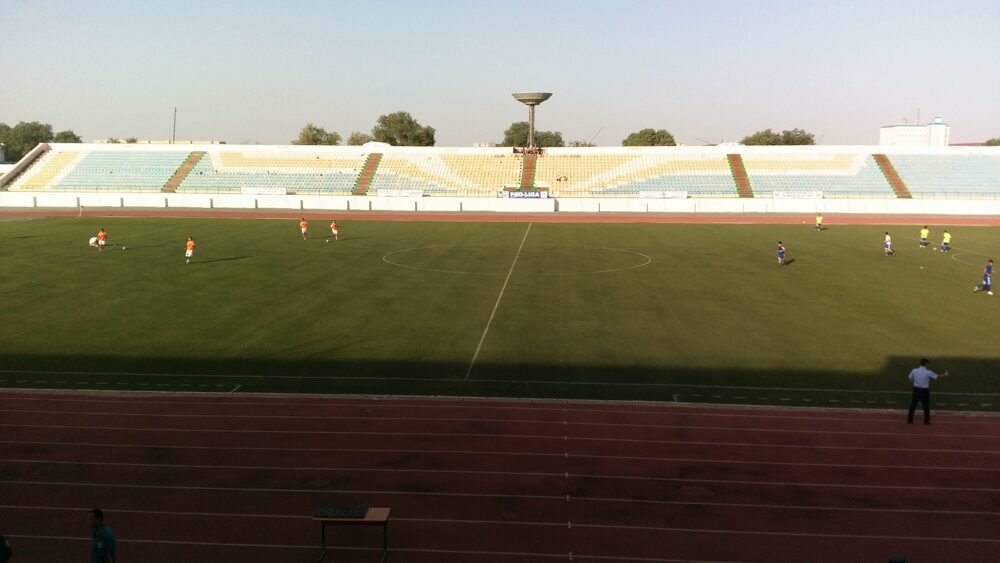
Transport
Air
Nukus Airport has a three-kilometer runway and is capable of receiving all types of aircraft. There are regular flights from Nukus, in particular, to Tashkent.
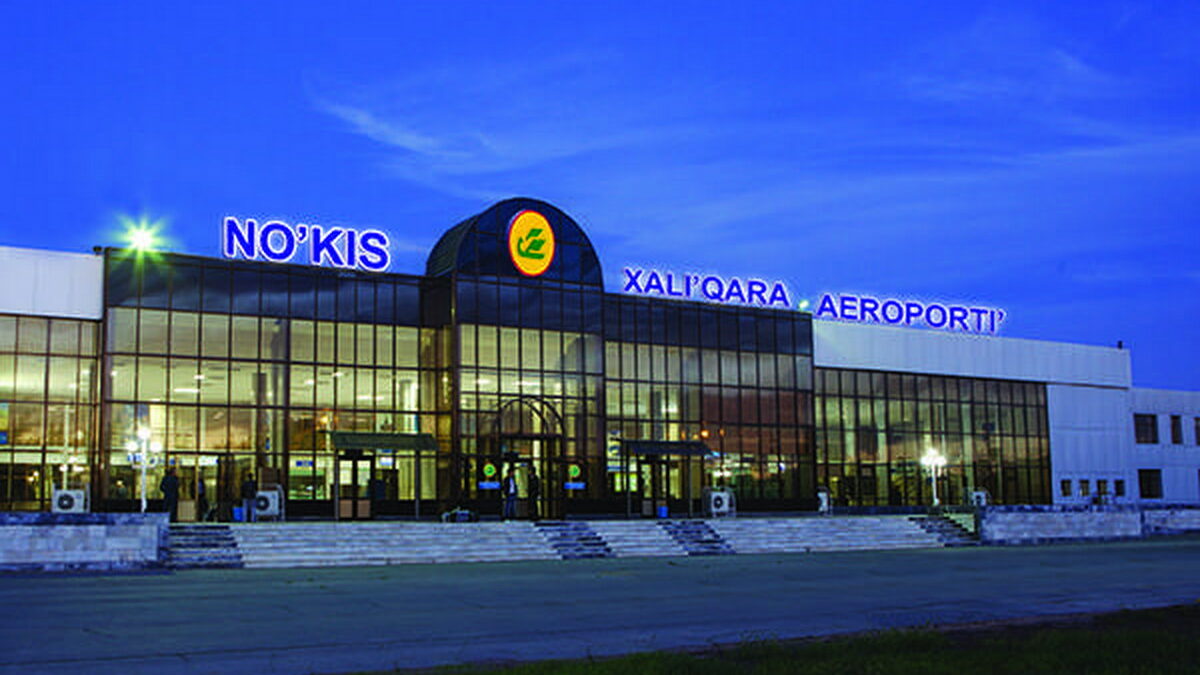
Railway
Republican trains pass through the railway station (Kungrad — Tashkent, Nukus — Beineu, Kungrad — Andijan) and international (Volgograd (Russia) — Tashkent, Volgograd (Russia) — Dushanbe (Tajikistan), Volgograd (Russia) — Khujand (Tajikistan), Volgograd (Russia) — Kulyab (Tajikistan)) values. Modern bus stations (Severny, Yuzhny and Saransha) provide regular flights to cities and districts of Uzbekistan.
